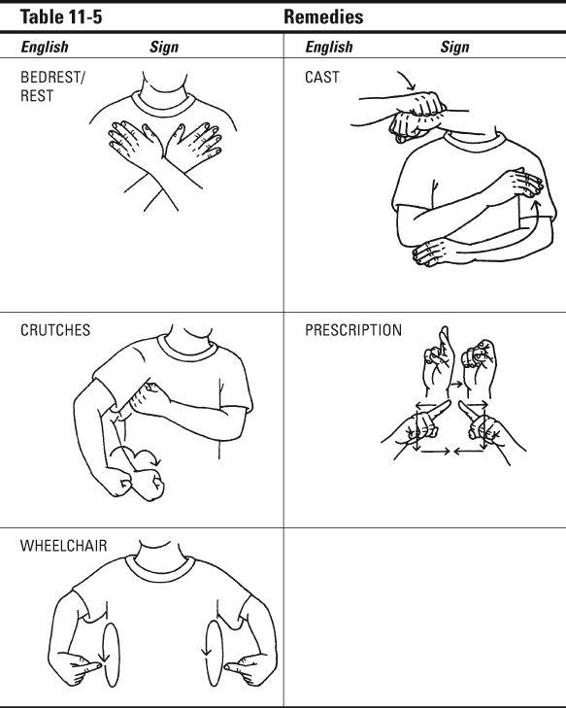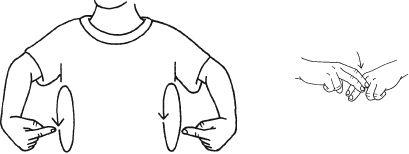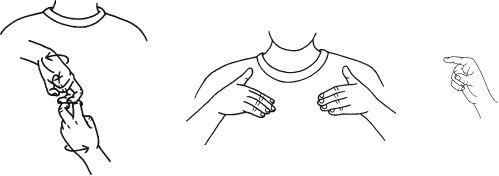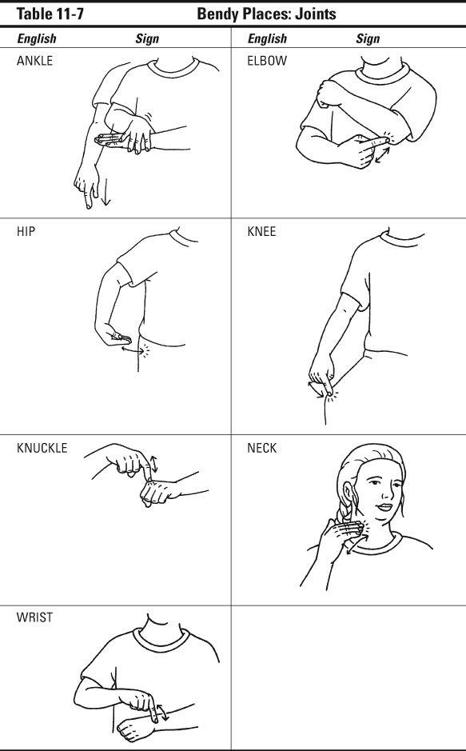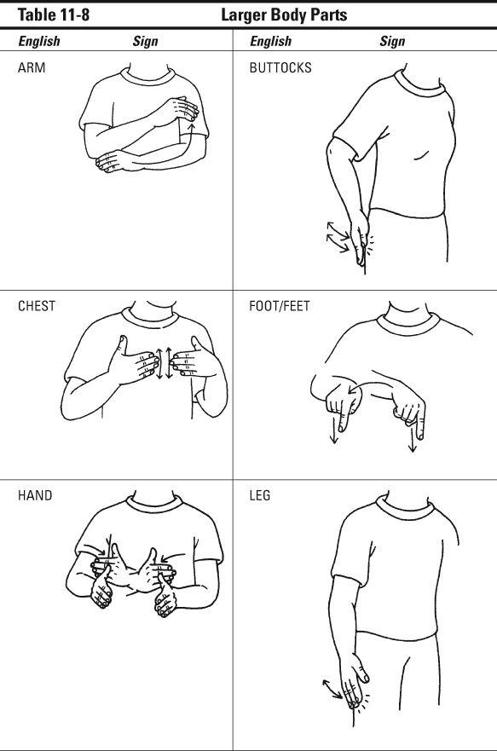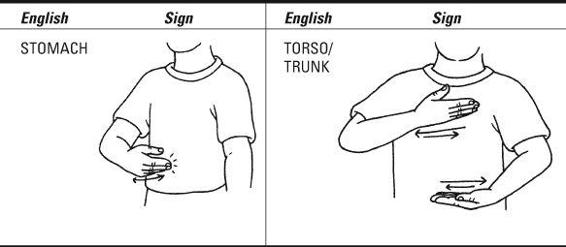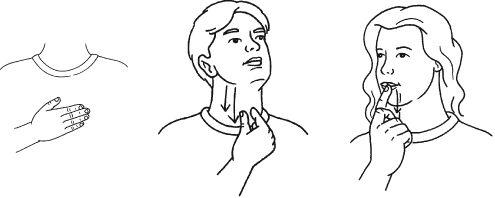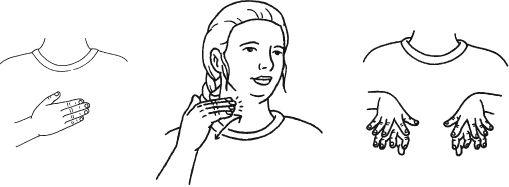Signing For Dummies (55 page)
Read Signing For Dummies Online
Authors: Adan R. Penilla,Angela Lee Taylor

The Signs in Table 11-5 are the perfect relief. Practice them and you’ll feel a whole lot better!
Cast
is signed by making the manual C handshape and placing it on your passive arm in a double sliding motion. If the cast is on a leg, point to the area. If it’s a body cast, fingerspell C-A-S-T or else you’ll be pointing all day.
You sign
prescription
with the manual letters R-X, and then sign a square with both index fingers starting at the top and meeting at the bottom — it means “slip.”
If you’re feeling up to it, try the following sentences.
English:
She has an infection.
Sign:
INFECTION — HAS HER
English:
Sit in the wheelchair.
Sign:
WHEELCHAIR — SIT
English:
You have a sprain.
Sign:
SPRAIN — HAVE YOU
Pointing to Body Parts
If you’re using ASL to describe ailments, it helps to be able to do more than point to the part that hurts, although in many cases, that’s exactly how you Sign different body parts. Tables 11-6, 11-7, and 11-8 run down the Signs for body parts in three different groups. Most of the Signs in these tables are signed with a double motion; for example, for
ear,
tug twice on your earlobe.
When you’re not feeling that well, these sentences will help you get all the sympathy your hands can hold.
English:
My throat is red.
Sign:
MY THROAT — RED
English:
My neck is stiff.
Sign:
MY NECK — STIFF
